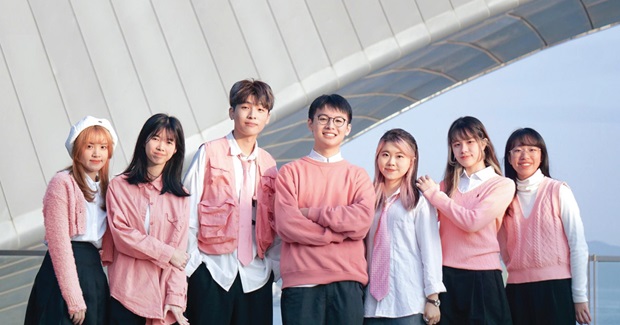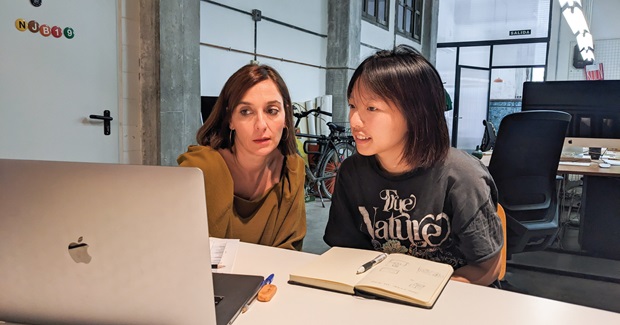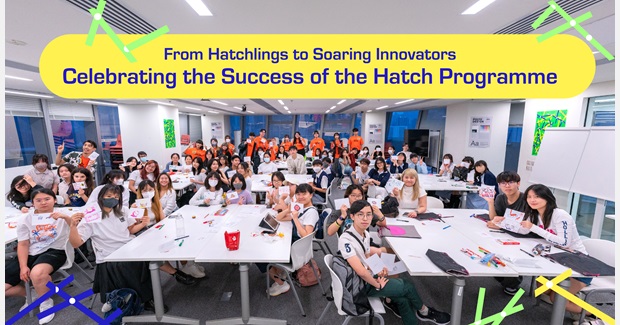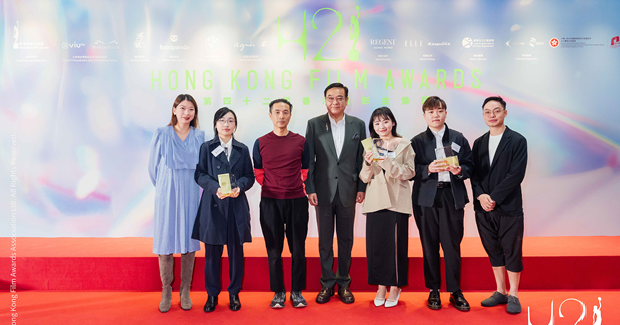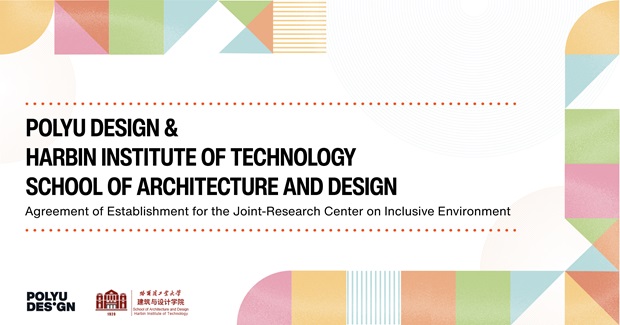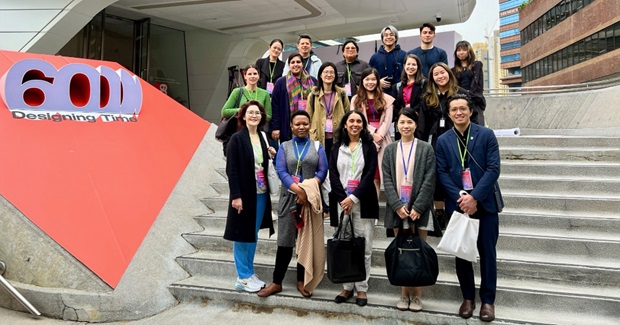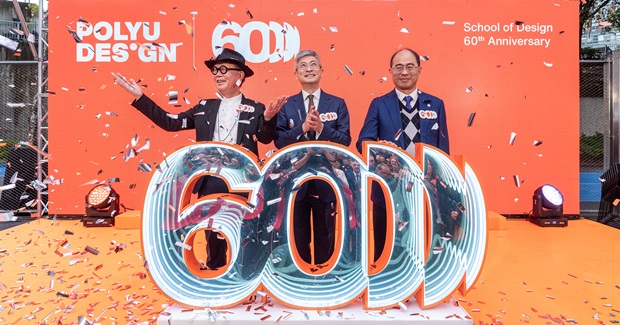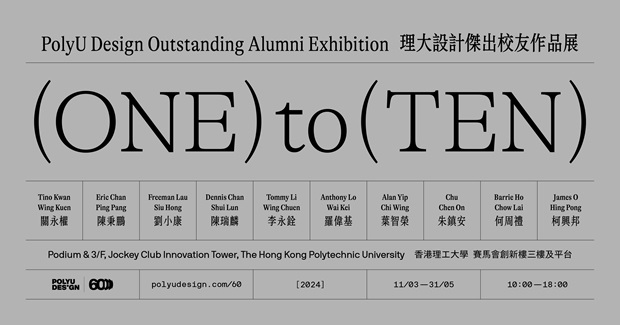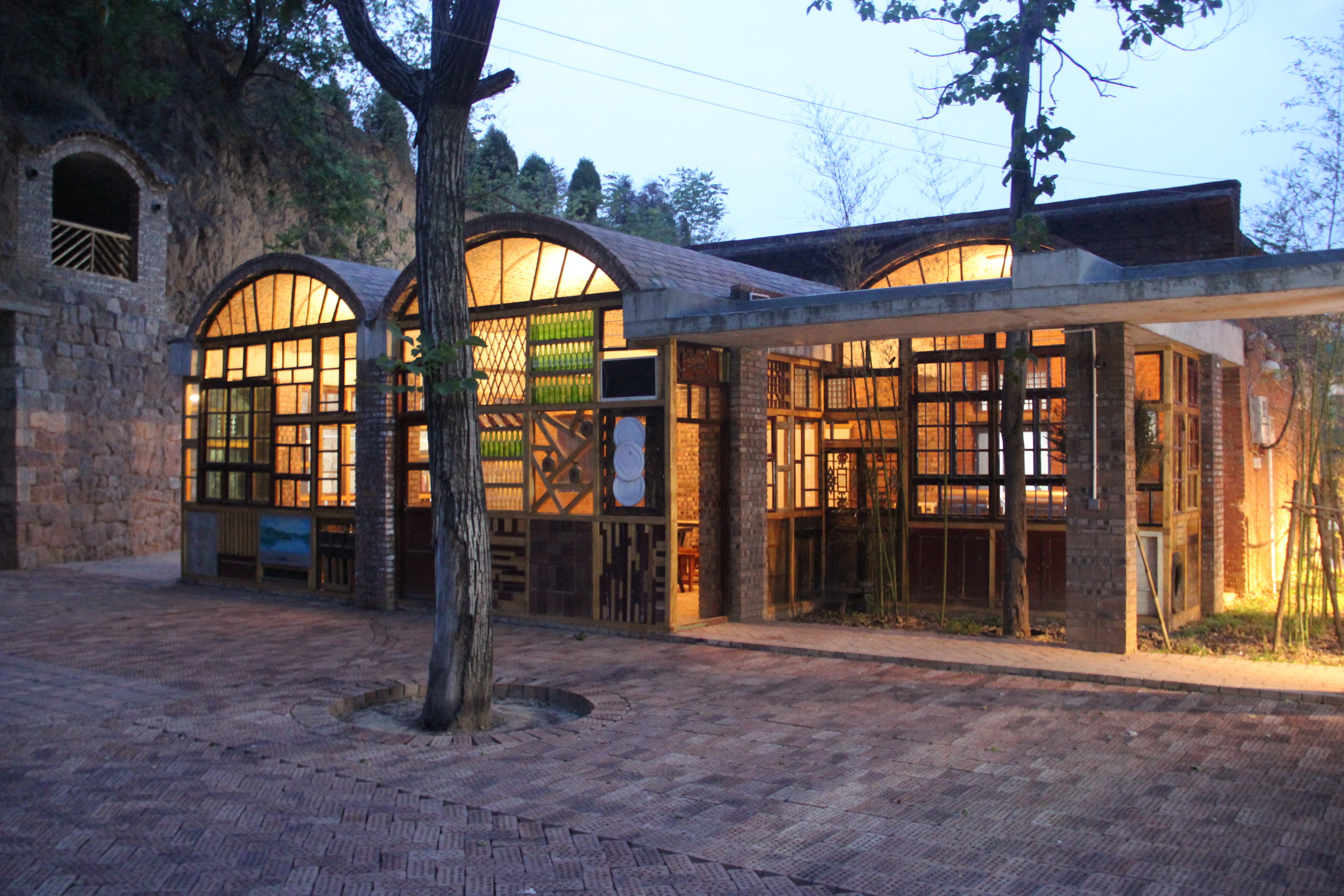
ouThe House of Dreams is the latest completed project of the Insitu Project research platform directed by Peter Hasdell and Kuo Jze Yi based in PolyU Design. The revitalized cave settlement in Zhoushan village in Henan Province, completed in 2020, was designed and implemented by Insitu Project together with Liang Jun, the Zhoushan Community Group and Dr Ku Hok Bun from the Department of Applied Social Sciences of PolyU.
This project was awarded the gold medal in the Taipei International Design Award 2021 and is an award winner in the Architecture MasterPrize (AMP) awards in 2021. It was also shortlisted in the Dezeen Awards 2021 and the Architecture in Development 2021 awards. The project was used as one of the impact cases contributed to PolyU Design's outstanding performance in the recent Research Assessment Exercise (RAE) of the University Grants Committee.
The House of Dreams as a collaborative social design focused project was built using recycled construction and household waste in a unique communal participatory process aligning collective memory, social innovation, skill development, circular economy and community resilience. The resulting form and aesthetic derive from collective creativity and construction skills of more than 80 villagers. The approach reduced construction and household waste in the village at the same time, helping to minimize construction costs. As an example of sustainable practice, community development and circular economy initiatives, the House of Dreams has relevance for other rural communities.
The project involved design and construction of 19 caves, 4 large courtyards, community guesthouses, dining and cooking facilities, activity spaces and new amenities, resulting in a comprehensive rural development facility that enables rural villages to share best-practices. Further steps are in progress.
The project name 'House of Dreams' derives from the collective memories of elder villagers arising from their remembrances of their childhoods spent living in the caves, the caves are now part of a remembered history and the memories of their ancestors and family life.
Spatial Design
Four underlying architectural and design concepts structured the project:
- Develop a diversity of cave reconstructions: The community collectively decided that cave revitalization and new cave structures were to be diverse reflecting their memories of living in the caves: reconstructed caves include: earth cave, grey-brick arch cave, red-brick arch, extended structure, vaults, conical arch structures, and cantilevered cave structures.
- Initiate local rural revitalization: The project initiated a step by step community run cultural planning process as a social paradigm, enabling community led bottom-up development.
- Foster a cyclical material economy: using recycled construction waste to develop sustainable practices in the village, also increased villager skills and training in construction. Villagers donated building materials and sought other waste materials and their participation in construction allowed stories to become patterns in courtyard spaces. The various experimental masonry techniques resulting show mixed material to building with wastes and eco-brick.
- Enhanced environmental planning principles: Include amenities and waste management in the construction of a communal septic tank that feeds a fruit orchard to avoid water stream pollution. The amenities building was constructed to retain all trees, incorporating holes for trees in the roof structure.
Social Organization
As an integrated part of the revitalization process, the project led to innovations in community skill methods. The training of elderly villagers (with no building experience) in the experimental construction using waste material involved steps of collection, design and construction. This resulted in the incorporation of construction waste, bottles, plastics and objects into building walls, floors and surfaces and helped to develop a local know how economy in the recycling of local resources fostering new skills and values. This process reduced the building cost, and allowed unskilled villagers to become participants in the construction process. Technical decisions were initiated to influence social integration into the project, fostering a bottom-up self-built approach. The social-technical innovation therefore generated innovations based on local abilities. The three outcomes of this process are:
- The incorporation of waste materials in walls and surfaces enabled the villagers to embed their stories
and memories into the material surfaces of the project. The stimulation of the practical and organizational skills of the villagers serves to reactivate forgotten skills of the villagers. - By using recycled construction and household waste in the village in the reconstruction of revitalized buildings, the community perception was shifted from seeing waste as landfill to understanding that this can still be valuable. This shifts the material economy in the village to a circular economy of recycling and sustainable practices.
- As a result, community cohesion and pride increased, coupled with a corresponding rise in villager skills in construction. The reduced construction costs and reduced waste in the village enabled strengthening of sustainable practices.
Architectural design and research team
Project and Research Leaders: Insitu Project: Peter Hasdell and Kuo Jze Yi
With: Zhou Zi Hau, An Tian Jian, Lee Chung Bun, Liu Min Hau
Project partners
Insitu Project
School of Design, The Hong Kong Polytechnic University
School of Architecture and Urban Planning, Shenzhen University
Department of Applied Social Sciences, The Hong Kong Polytechnic University
Liang Jun and the Zhoushan Community Group
Project team
Community Work: Liang Jun, Ou Yang Xiu Zhen, Dong Lin, Jin Dou Dou
Solidarity Economy: Dr Ku Hok Bun (APSS, The Polytechnic University of Hong Kong)
Zhoushan Rural Building Team: Yi Rong Liang, Zhou Hai Shan, Chen Guo Bin, Zhou Bao Liang, Wang Zhen Shan, Wang Zhong Shuan, Wang Jin Ping, Zhou Yin Mu, Wang Dong Biao, Sun Huan Ling
Building Management: Feng Rui Fen, Wu Huai Zhen, Jing Qiu Feng, Hao Yu Zhi
Community Association: Zhou Xi Chuan, Jing Xiu Fang, Zhou Xi En
Material Donation Representative: Yi Fang, Zhou Zi Yun, Zhoushan Village Party Branch Committee & Zhoushan Village Committee
Interior Decoration: Evelyna Liang Yi Hu
Volunteers: Wu Jun Ping, Keita Tajima, Tan Min, Li Dong Min, Aubrey Au, Chelsea Chan
Project funders: The Li & Fung China Social Policy Research Fund and the Chan Cheung Mun Chung Charitable Fund
Click through the links below to learn more:
Insitu Project (website | Instagram)
Insitu Project - House of Dreams
| Topics | Awards | Collaboration | Design Research | PolyU Design Research | News | Design |
|---|
You may also like



